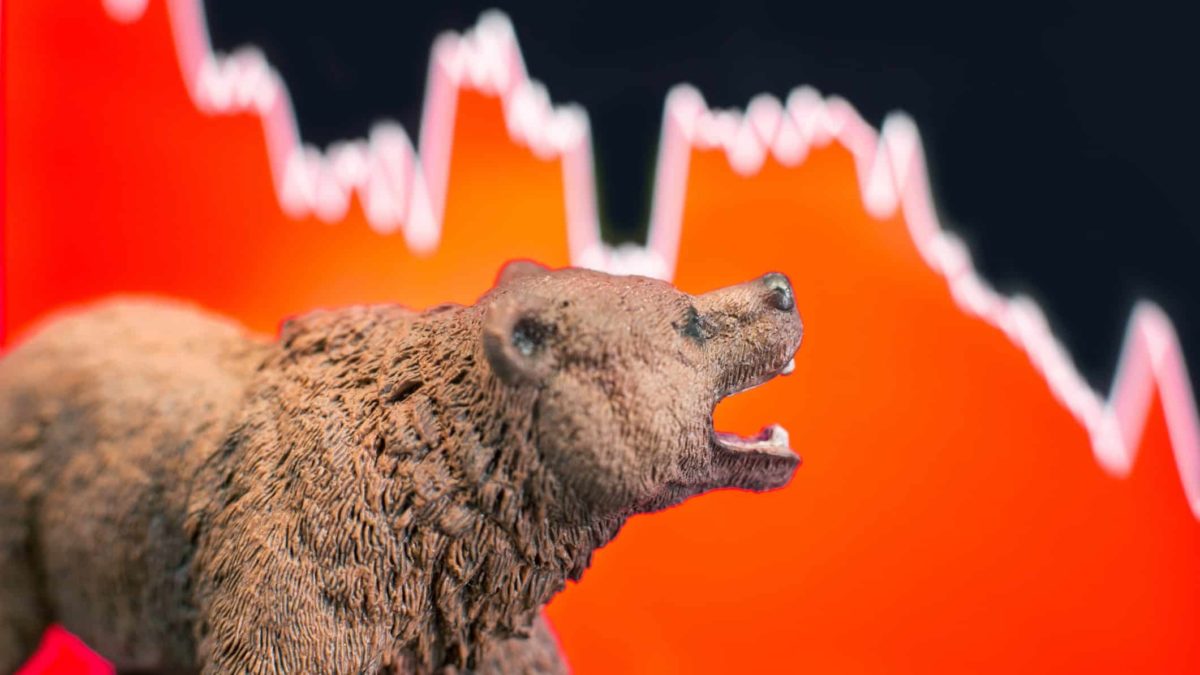The rather dire performance of the S&P/ASX 200 Index (ASX: XJO) over this week so far has understandably shocked and dismayed many investors. Over just the past one-and-a-half trading days, the ASX 200 has gone from 6,932 points to the current 6,667 points. That's a fall of more than 4%. With such steep falls, many investors might assume the ASX is now in a bear market.
But this assumption would be incorrect (at least for now). As we covered yesterday, for bear market conditions to be met, we first need a stock market crash. That entails a fall of 20% or more from a market's most recent high. The ASX 200 last peaked back in August last year.
That was when the ASX 200 hit 7,632.8 points. Although we have fallen considerably from that lofty high watermark, the ASX's falls from there are still only sitting at just over 12.6%. So we aren't quite in bear market territory yet.
But, like many things, a market crash is only obvious in hindsight. So we could well be in the first stages of one (not to sound overly pessimistic). If we do end up seeing the ASX 200 in a bear market, how long would it last?
How long do bear markets last?
Well, there's no way of predicting this with certainty. However, we can look at how long other ASX 200 bear markets have lasted for some idea of what could be in store.
Of course, the most recent ASX 200 bear market we've seen was the COVID crash of 2020. Since this was the first bear market ASX investors had seen for almost a decade, it is the one that many investors now hold as the standard.
But the COVID crash of 2020 was an exceptionally short bear market (although still sharp). It saw the ASX 200 go from the peak of 7,197.1 points that we saw on 20 February 2020, to a low of 4402.5 that was hit on 23 March that year. That was a painful fall of 38.83% over those four weeks or so. But after two months or so, it was all over. The ASX 200 had risen by 20% off of its lows by early June 2020, and the bear had been replaced with a bull.
That doesn't sound too bad in hindsight – two months to tip everything you own into shares, only to see them explode in value afterwards. But if all market crashes were over in two-and-a-bit months, then we probably wouldn't be so scared. So let's go back to the global financial crisis of 2007 and 2008.
Before the GFC hit with all its force, the ASX 200 peaked back in November 2007. But it took until March 2009 for the market to find its bottom. That's almost 18 months of waiting for the share market to stop falling – nasty stuff. It was only in May 2009 that the bear market was over. But, as they say, waiting is the hardest part.
What is your average bear?
The point is that the past two decades have seen a bear market that has lasted just over two months, and a bear market that lasted almost 18 months.
But what is the length of an average bear market? According to analysis by fund manager Zurich, ASX shares have seen 11 bear markets since 1970. The average duration of these bear markets was 13 months, with an average market loss of 35.8%.
But consider this. The ASX 200 has also seen 11 bull markets over this period. And the average duration of these bull markets was 46 months (not including the most recent, post-COVID crash bull run). The average return for these bull markets was 130.1%.
So we know that the ASX 200 is in bull market territory most of the time. And we can also gather that the losses of the bear markets don't even come close to cancelling out the gains of the bull markets. Something to keep in mind during these difficult times for ASX 200 shares.









